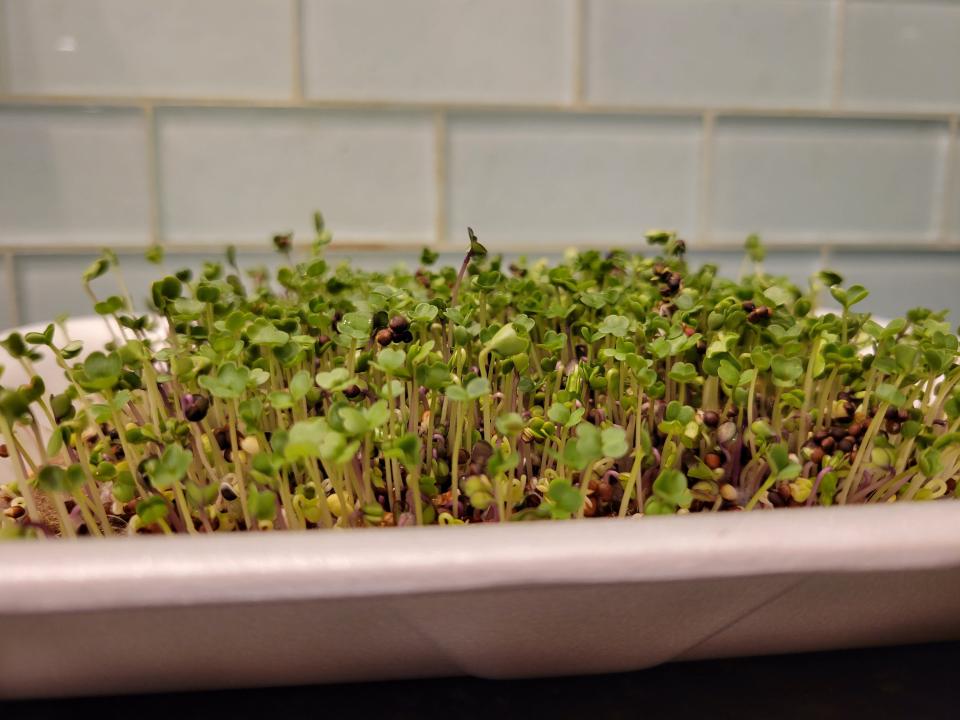Florida gardening in May means knowing what to plant and what not to prune | Sally Scalera
Though we have already begun receiving warm weather, this month is still ideal for gardening. After all, when the weather is nice, who wants to stay inside?
If you don't know how to get started, or have had difficulty growing vegetables, herbs and fruit in the past, sign up for The Be Healthy: Grow Your Own Food four-week series. It’s scheduled to begin on June 19 with two class times to choose from. A day-time class is scheduled from 10 a.m. to noon and another night class is from 6-8 p.m. on four consecutive Mondays.
Learn how to grow vegetables, herbs and fruit crops in both containers and the ground, plus learn about sprouts, microgreens and a D.I.Y. hydroponic buckets for growing lettuce.
Wouldn’t it be great to grow your own nutritious food at home, even if you only have a balcony or patio? Each $45 ticket includes handouts and seeds of heirloom vegetables, culinary herbs and flowers. Families, couples or friends can share the handouts and seeds and only pay for one ticket.
Participants can attend in person or via Zoom. With two classes available each Monday, both in-person and via Zoom, you can attend either class, whichever time works best that day. So, one way or another, you can learn how to grow your own food. For more information and to register, go to 2023BHGYOFamclass.eventbrite.com or 2023BHGYOFpmclass.eventbrite.com or call Adrienne at 633-1702 ext. 52315 for help.
Here are some more ideas for things to do in the yard in May.

Pamper lawn with liquid seaweed
Pamper your lawn by spraying it with liquid seaweed (i.e., Maxicrop, Liquid kelp, etc.) to supply more than 60 trace elements and growth hormones. The easiest way to spray the lawn is with a hose-end sprayer. If you are growing edible plants, spray them using a hand pump-up sprayer every week, if possible.
Mow the lawn weekly
Mow the lawn every week so that no more than 1/3 of the leaf blade is removed at each mowing and the weeds are cut before they can produce seeds. For St. Augustinegrass and Bahiagrass, mow the grass so that it is 3-4 inches tall after it has been mowed.
Re-seed Bahiagrass for a thicker lawn
Bahiagrass typically thins out, so it’s a good practice to re-seed it by applying scarified Argentine Bahiagrass seed at a rate of 3-5 pounds per 1,000 square feet to create a thicker lawn.
Don't prune trees or palms in May
Don’t prune your palms and trees this month, as wildlife are rearing their young now. If you must prune, be sure to check for baby wildlife first and only prune if none are present. Proper pruning for palms is just the removal of brown fronds. Photosynthesis occurs in green fronds, so the best thing you can do for your palm is to leave all the green fronds alone. Fronds with yellow and green plant tissue supply nutrients to the new growth, so don’t remove them either.
Inoculate planting holes for new plants
When planting new plants, inoculate the planting hole with various mycorrhizae. After the plants are established, inoculate them (and any established plants not inoculated) with a liquid product containing various beneficial bacteria, saprophytic fungi, and mycorrhizae to help your plants grow. For more information on this topic, email the UF/IFAS Extension Brevard County Master Gardeners at brevard-mg1@ifas.ufl.edu for information.
Summer flowers to plant in sun or shade
Replace fading winter flowers with heat-loving ones. For locations that receive full sun, which is a minimum of six hours of direct sunlight daily, some possible choices include celosia, coleus, lisianthus, marigolds, gomphrena, vinca, portulaca, purslane, salvia, sunflowers, gazania, Melampodium and zinnias. In shady areas, you can plant coleus, impatiens, wax begonias, anglewing begonias, dusty miller and crossandra.
Self-seeding flowers to plant
If you would like to take advantage of self-seeding flowers that will provide you with new plants (without any effort on your part) consider the following native choices: coreopsis, tropical sage (Salvia coccinea), blanket flower (Gaillardia pulchella) and the non-native cosmos species, are all options that will continue to brighten your landscape.
Bulbs for your summer landscape
Bulbs that you can add to your garden this month include Amazon lily (Eucharis spp.), agapanthus, blood lily (Haemanthus multiflorus), caladium, crinum, shell lily (Alpinia zerumbet), gladiolus, gloriosa lily, rain lilies, and spider lily (Hymenocallis spp.).
Herbs that can be planted this month
Some herbs that can be planted this month include basil, chives, dill, sage, fennel, parsley, rosemary, mint, sweet marjoram and thyme.
Keep citrus trees watered
Don’t forget to give citrus trees one inch of water every 7-10 days if your yard doesn’t receive a storm that drops at least one inch of rain. Hopefully, you have a rain gauge in your yard, but if not, put that on your shopping list.
Replace spent vegetables with summer crops
Replant spent vegetable plants with summer crops such as calabaza, chayote, jicama, Malabar spinach, New Zealand spinach, okra, Seminole pumpkin, and winged beans. Provide a trellis for climbing crops such as chayote, Malabar spinach, and winged beans to keep the fruit off the ground.
Visit the farmers market
The Brevard County Farmers Market is held from 3-6 p.m. Thursdays at the Wickham Park Pavilion, so come check out all the vendors and the delicious food and products they have for sale! To get the latest information, check out the Facebook page at facebook.com/brevardcountyfarmersmarket.
Sally Scalera is an urban horticulture agent and master gardener coordinator for the University of Florida’s Institute of Food and Agriculture Sciences. Email her at sasc@ufl.edu.
This article originally appeared on Florida Today: Seaweed for the lawn, bulbs to plant, herbs to grow in May in Florida

